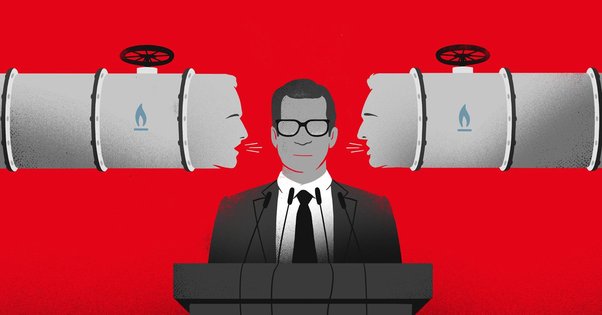If you asked someone whether a law called the Renewable Energy Directive, which is designed to boost the roll-out of renewable energy across Europe, should also promote a climate-damaging fuel that’s made from fossil gas, they’d probably say no.
If that someone was a fossil fuel lobbyist however, you might get a different answer.
We know this because in 2021, the EU decided to revise the Renewable Energy Directive. This is a law that sets targets to increase the share of renewables in the EU’s energy system, such as wind and solar, with the aim of helping the bloc to achieve its climate goals.
Companies that produce renewable energy stand to benefit from their sector being included in the law – whether it’s wind, solar, geothermal or hydropower – as it encourages EU countries to increase their use of the energy these companies sell.
Not content with watering down myriad other laws designed to protect the climate, fossil fuel lobbyists saw another opportunity: to get a fuel called ‘blue hydrogen’ categorised as renewable under the revised EU law.
As blue hydrogen is made from climate-wrecking fossil gas and is emphatically not renewable, pushing for it to be included in the law was a brazen move, even by the morally bereft standards of the fossil fuel lobby.
Fossil fuel companies are promoting blue hydrogen as a ‘low carbon’ fuel that can replace oil, gas and coal. Because it’s made from fossil gas, producing blue hydrogen releases large amounts of climate-destroying methane and carbon dioxide.
The companies claim that these emissions can be brought down to sustainable levels by using carbon capture equipment – a technology that has comprehensively failed over the last thirty years – and supposedly ‘low methane’ supplies of fossil gas.
But even if blue hydrogen was produced at the ‘sustainable’ emissions limit proposed by the EU (see page 8), it would still dump around 87 million tonnes of climate-heating pollution into the atmosphere every year if Europe used the amount of blue hydrogen that fossil fuel companies would like to see (see page 9).
That’s more than the carbon emissions caused by Austria and Denmark combined. As such, blue hydrogen is far from climate friendly, and governments shouldn’t support it with favourable regulations or taxpayer subsidies.
Because labelling blue hydrogen as a renewable fuel would give it a huge boost, Global Witness started a campaign to keep it out of the EU’s renewables law, working with partner NGOs and progressive energy companies.
The next 18 months were a bit of a rollercoaster ride, with supporters of blue hydrogen trying various different ways of including it in the law, all of which were successfully defeated. Or so we thought...
By March 2023, negotiations were close to the finishing line, with the draft law seemingly safe from fossil fuel infiltration.
But with only days to go, heavy pushing from France to include hydrogen made from nuclear power in the law – another so-called ‘low carbon’ fuel – threatened to undo campaigners’ work and allow blue hydrogen to sneak into the law at the last minute.
France’s proposal was hugely controversial, and caused the final round of talks between governments of EU member states to drag on for another two months.
The final deal was adopted by the European Parliament on September 12 and, to climate campaigners’ relief, it definitively excludes blue hydrogen from the renewables law.
However, France’s efforts to include nuclear-based hydrogen in the law – which is not renewable – were successful. This sets a bad precedent, as it could strengthen the hand of industry lobbyists pushing for nuclear- or fossil-based technologies to be supported by other energy policies that should promote renewables only.
So while a blue hydrogen-free law is a win for the climate, the fight continues and campaigners are keeping a close watch on the industry’s next moves.


